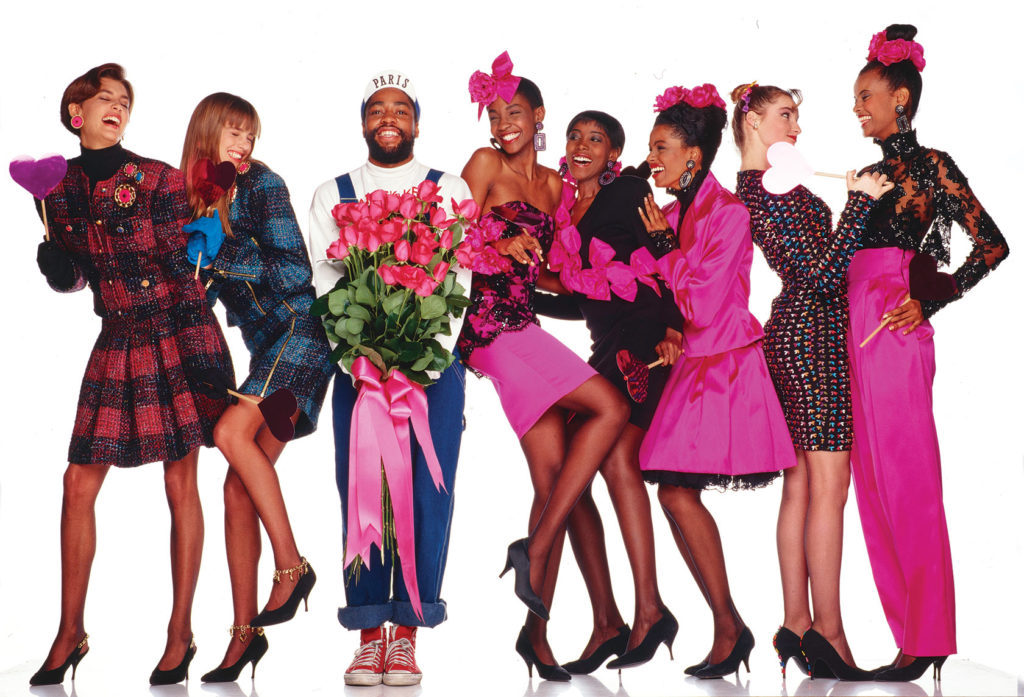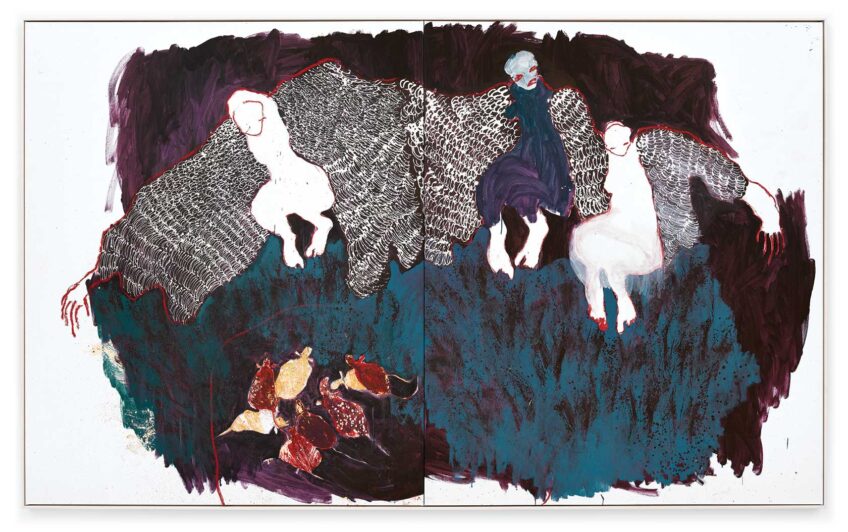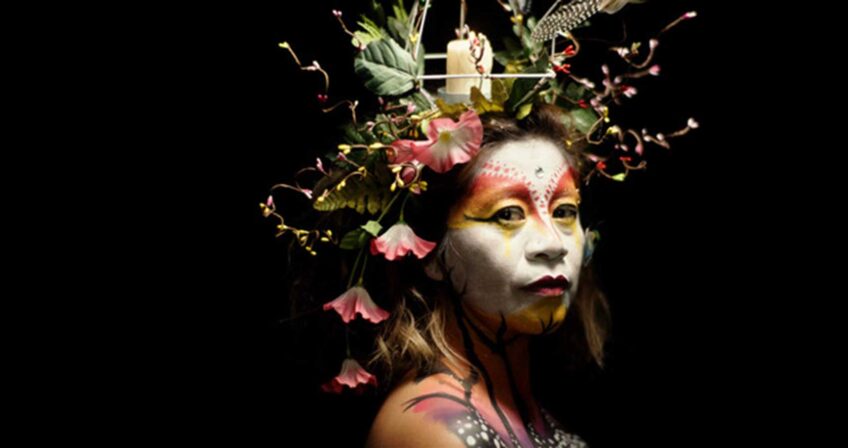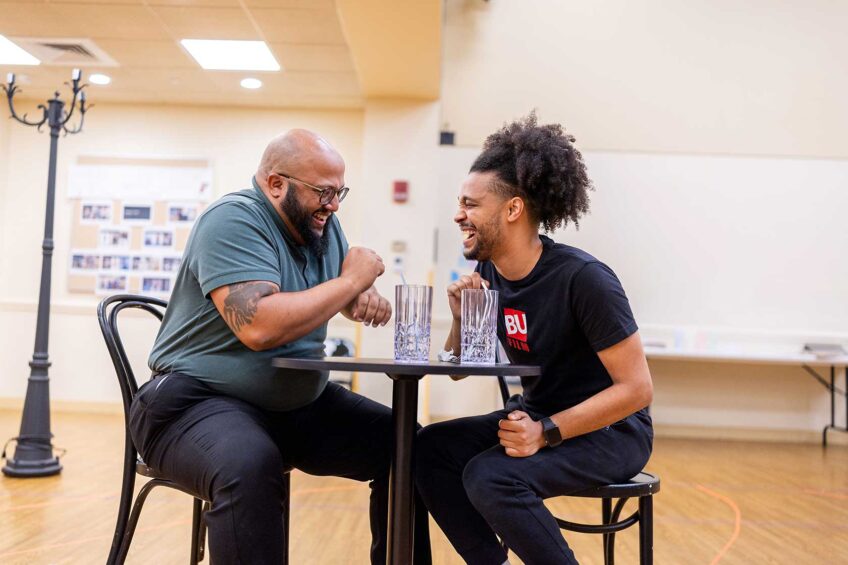
Joy isn’t a word often associated with the world of high fashion. But for Patrick Kelly, a Black, queer designer whose designs reigned on runways in the 1980s, joy and love were the main priorities. Now, in “Patrick Kelly: Runway of Love,” running at the Peabody Essex Museum through Nov. 6, Kelly’s designs are celebrated with all the love he would have wanted.
Upon entering the exhibit, visitors are greeted by a mannequin wearing one of Kelly’s own outfits, the denim bib overalls that became his signature look. “In this first area, [it’s] just getting to know Patrick, understanding who he is,” says Petra Slinkard, PEM’s director of curatorial affairs and the Nancy B. Putnam curator of fashion and textiles, who worked with theo tyson, advising scholar and Penny Vinik curator of fashion arts at the Museum of Fine Arts, Boston, on the show. “He would begin every show by going out with a red spray-paint can and tagging the back of the wall as a message to his audience that he loves them.”
The PEM exhibit moves chronologically through Kelly’s career and continuously underscores his own motto that “anything is possible.” In the early installations, viewers can see how Kelly, operating with little money and limited pattern-drafting skills, used jersey fabric to create beautiful, if simple, garments. As his career skyrocketed, he had the time and tools to create increasingly elaborate, irreverent and symbolic looks.
The exhibition, PEM’s first to highlight one specific designer, showcases more than 75 ensembles from Kelly’s short but vibrant life in fashion. Tragically, the designer passed away from AIDS in 1990 at age 36.
Though Kelly was a ball of positive energy, his work did have a more serious bent, a message wrapped up in those bright colors and eclectic accessories. Kelly and his husband collected racist and anti-Black memorabilia, and Kelly incorporated some of these motifs, including the Golliwogg minstrel doll, into his designs and his business. In one collection, he pays homage to queer, Black icon Josephine Baker with his own recreation of some of her looks and a pink coat featuring a print of her on it.
“Patrick Kelly’s collecting of objects and reimagining of imagery inherently racist and anti-Black into a sartorial critique is evidence of his belief that nothing is impossible,” says tyson. “His astute understanding and command of fashion as a language allowed him to innovate and transform the lived experiences of his youth in a Jim Crow-sanctioned South intolerant of Blackness and queerness into an entrepreneurial expat in Paris exalted for that very Blackness and queerness.”
Kelly’s success, particularly given these dynamics, was an incredible feat, a true manifestation of his motto. The exhibit highlights also how Kelly’s legacy lives on in The Kelly Initiative, an organization run by and for Black creatives offering fellowships and opportunities to rising talents.
There are three videos in the exhibit that show original footage from Kelly’s runway shows. They provide an incredible contrast to the serious tone of many contemporary runway shows. The models, typically friends of Kelly’s, are smiling and dancing. Kelly himself comes onto the runway laughing, smiling and embracing the audience. From every video, and from every garment, joy radiates.
“We engaged in this as an endeavor of love,” tyson says, “and we hope that that’s what everyone is able to take away from this.”







